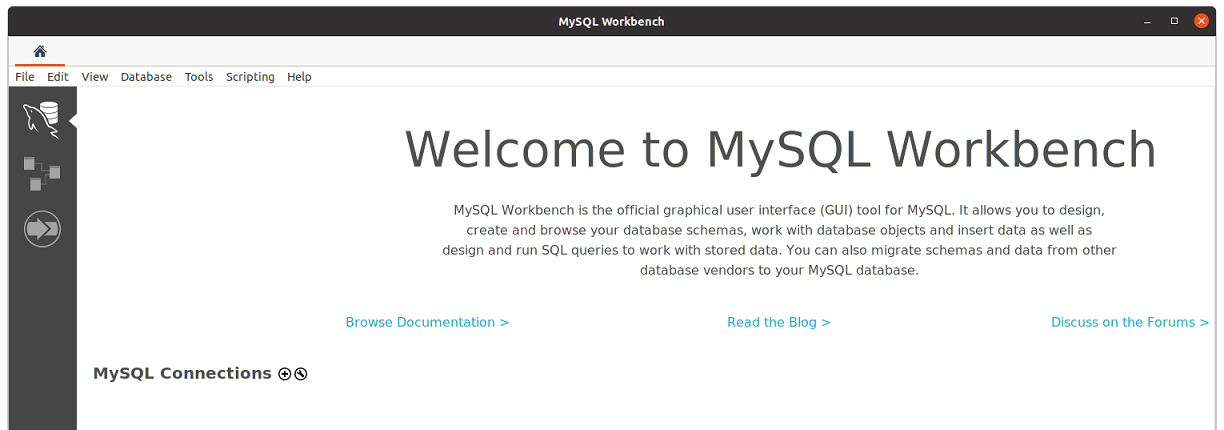How To Install MySQL Workbench on Fedora 42

MySQL Workbench stands as an essential visual database design tool that allows developers and database administrators to efficiently manage MySQL environments. As Fedora 42 continues to gain popularity among Linux enthusiasts, knowing how to properly install and configure MySQL Workbench becomes increasingly valuable. This comprehensive guide walks you through multiple installation methods, configuration steps, and troubleshooting techniques to ensure you have a fully functional MySQL Workbench environment on your Fedora 42 system.
Introduction
MySQL Workbench serves as a unified visual tool for database architects, developers, and administrators. It provides comprehensive data modeling, SQL development, and administration tools for server configuration and user management. Fedora 42, with its cutting-edge package management system DNF (Dandified YUM), offers several approaches to install MySQL Workbench.
This guide targets both beginners exploring database management tools and experienced developers seeking to streamline their workflow on Fedora 42. We’ll explore multiple installation paths, ensuring you can choose the method that best aligns with your specific requirements and comfort level with Linux systems.
Whether you’re setting up a development environment, managing production databases, or learning database administration, this tutorial provides the foundation you need for a successful MySQL Workbench installation on Fedora 42.
Prerequisites for Installation
Before proceeding with the installation, ensure your system meets the following requirements:
System Requirements:
- Fedora 42 (fully updated)
- Minimum 2GB RAM (4GB recommended for optimal performance)
- At least 5GB of free disk space
- Active internet connection for package downloads
- Root or sudo privileges for installation
Preparation Steps:
First, check if you have existing MySQL installations using:
sudo dnf list installed | grep mysqlIf you have previous installations that need preservation, back up your databases:
sudo mysqldump --all-databases > mysql_backup.sqlUpdate your system packages to ensure compatibility:
sudo dnf updateVerify your Fedora version to confirm compatibility:
cat /etc/fedora-releaseWith these prerequisites in place, you’re ready to explore the different installation methods available for MySQL Workbench on Fedora 42.
Understanding MySQL Installation Options
Before diving into specific installation methods, it’s important to understand the available options for installing MySQL Workbench on Fedora 42. Each approach offers different advantages depending on your specific requirements.
Different Installation Methods Available:
- Fedora Repository Installation: The simplest method utilizing Fedora’s native repositories. This approach ensures compatibility with your system but may not always provide the latest MySQL Workbench version.
- MySQL Official Repository: This method uses MySQL’s official repositories, giving you access to the latest releases directly from the developers. It offers better version control but requires additional configuration steps.
- Manual RPM Installation: For environments with specific version requirements or offline installations, downloading and installing RPM packages manually provides the most control but requires more manual intervention.
When choosing your installation method, consider factors such as version requirements, update frequency preferences, and system integration needs. For most users, the official MySQL repository offers the best balance of convenience and up-to-date software, while advanced users might prefer the control offered by manual installation.
Method 1: Installing from Fedora Repository
The Fedora repository provides a straightforward approach to installing MySQL Workbench. This method leverages DNF, Fedora’s package manager, making it ideal for users seeking simplicity and system integration.
Using DNF Package Manager:
First, search for available MySQL packages to confirm availability:
sudo dnf search mysqlInstall the MySQL server package, which serves as the foundation for MySQL Workbench:
sudo dnf install mysql-serverStart the MySQL service and enable it to launch automatically on system boot:
sudo systemctl start mysqld
sudo systemctl enable mysqldVerify the service status to ensure proper operation:
sudo systemctl status mysqldInstalling MySQL Workbench:
With the MySQL server running, install MySQL Workbench:
sudo dnf install mysql-workbenchThis command automatically handles dependencies, ensuring all required components are installed alongside MySQL Workbench.
Post-Installation Verification:
Check the installed MySQL Workbench version:
mysql-workbench --versionLaunch MySQL Workbench to verify its functionality:
mysql-workbenchIf you encounter errors like “Unable to locate package mysql-workbench,” you may need to enable additional repositories or consider the MySQL official repository method instead.
Method 2: Installing from MySQL Official Repository
Using MySQL’s official repository provides access to the latest versions and features directly from MySQL developers. This method ensures compatibility and offers more consistent updates.
Adding MySQL Repository:
First, download the MySQL repository package specific to Fedora 42:
wget https://dev.mysql.com/get/mysql84-community-release-fc42-1.noarch.rpmInstall the repository configuration package:
sudo rpm -Uvh mysql84-community-release-fc42-1.noarch.rpmUpdate your package cache to include the new repository:
sudo dnf updateInstalling MySQL Server 8.0.42:
Install the MySQL server from the official repository:
sudo dnf install mysql-community-serverStart and enable the MySQL service:
sudo systemctl start mysqld
sudo systemctl enable mysqldRetrieve the temporary root password generated during installation:
sudo grep 'temporary password' /var/log/mysqld.logInstalling MySQL Workbench:
Now install MySQL Workbench from the official repository:
sudo dnf install mysql-workbench-communityThis installation includes all necessary dependencies and ensures compatibility with the MySQL server version.
Securing the Installation:
Run the security script to strengthen your MySQL installation:
sudo mysql_secure_installationFollow the prompts to:
- Set a strong root password
- Remove anonymous users
- Disallow remote root login
- Remove test database
- Reload privilege tables
This critical step enhances the security of your MySQL server before connecting with MySQL Workbench.
Method 3: Manual RPM Installation
For situations requiring specific versions or offline installations, manually installing MySQL Workbench using RPM packages provides maximum control.
Downloading RPM Packages:
Visit the MySQL downloads page and select the appropriate packages for Fedora 42:
- Navigate to the official MySQL download page.
- Select “MySQL Community Server” and “MySQL Workbench”
- Choose Fedora 42 from the dropdown menu
- Download the RPM bundle package
Alternatively, use wget to download directly:
wget https://dev.mysql.com/get/Downloads/MySQL-8.0/mysql-8.0.42-linux-glibc2.17-x86_64-bundle.tarInstallation Process:
Extract the downloaded bundle:
tar -xf mysql-8.0.42-linux-glibc2.17-x86_64-bundle.tarInstall the MySQL server components first:
sudo rpm -Uvh mysql-community-{server,client,common,libs}-*Handle any dependency issues that arise:
sudo dnf install -y libaio ncurses-libsInstall MySQL Workbench:
sudo rpm -Uvh mysql-workbench-community-8.0.42-1.fc42.x86_64.rpmConfiguration Steps:
Initialize the MySQL server data directory:
sudo mysqld --initializeStart and enable the MySQL service:
sudo systemctl start mysqld
sudo systemctl enable mysqldRetrieve the temporary root password:
sudo grep 'temporary password' /var/log/mysqld.logComplete the security configuration following the steps outlined in Method 2.
Configuring MySQL Server
Proper configuration of your MySQL server is essential for security and optimal performance with MySQL Workbench.
Initial Security Setup:
Change the root password using the temporary password from the log file:
mysql -u root -pOnce logged in, update the password with:
ALTER USER 'root'@'localhost' IDENTIFIED BY 'NewStrongPassword';Creating Administrative Users:
Create a dedicated user for MySQL Workbench connections:
CREATE USER 'workbench_user'@'localhost' IDENTIFIED BY 'SecurePassword';
GRANT ALL PRIVILEGES ON *.* TO 'workbench_user'@'localhost' WITH GRANT OPTION;
FLUSH PRIVILEGES;This practice separates your administrative access from the root account, enhancing security.
Testing Connection:
Verify connectivity with your newly created user:
mysql -u workbench_user -pIf successful, you’ll see the MySQL prompt. You can further test database functionality with:
SHOW DATABASES;
CREATE DATABASE test_db;
SHOW DATABASES;
DROP DATABASE test_db;
EXIT;This confirms your MySQL server is properly configured and ready for connections from MySQL Workbench.
Using MySQL Workbench
After installation and server configuration, you can begin using MySQL Workbench to manage your databases visually.
First Launch:
Launch MySQL Workbench from your application menu or terminal:
mysql-workbenchThe welcome screen displays connection options and recent connections.

Connection Setup:
Create a new connection to your local MySQL server:
- Click the “+” button next to “MySQL Connections”
- Enter a connection name (e.g., “Local MySQL Server”)
- Set hostname as “localhost”
- Enter username as “workbench_user” (or your created username)
- Click “Test Connection” and enter your password
- Upon successful connection, click “OK” to save
Workbench Customization:
Optimize MySQL Workbench for Fedora 42:
- Navigate to Edit > Preferences
- Under “SQL Editor,” set your preferred SQL mode
- Adjust “Administration” settings to match your MySQL server configuration
- Configure themes under “Appearance” for comfortable viewing
Explore additional settings like auto-completion, query optimization, and data export formats to enhance your workflow.
Advanced Configuration
Fine-tuning MySQL for optimal performance on Fedora 42 ensures efficient database operations.
Performance Tuning:
Edit the MySQL configuration file:
sudo nano /etc/my.cnfAdd or modify these performance settings:
[mysqld]
# Memory allocation
innodb_buffer_pool_size = 1G
innodb_log_file_size = 256M
# Query cache settings
query_cache_size = 32M
query_cache_type = 1
# Connection handling
max_connections = 150
table_open_cache = 2000Restart MySQL to apply changes:
sudo systemctl restart mysqldEnvironment Variables:
Set system-wide environment variables for MySQL:
sudo nano /etc/profile.d/mysql.shAdd the following content:
# MySQL paths
export MYSQL_HOME=/usr/local/mysql
export PATH=$PATH:$MYSQL_HOME/binMake the script executable:
sudo chmod +x /etc/profile.d/mysql.shDesktop Integration:
Create a desktop shortcut for MySQL Workbench:
sudo nano /usr/share/applications/mysql-workbench-custom.desktopAdd the following content:
[Desktop Entry]
Name=MySQL Workbench
Comment=MySQL Database Design Tool
Exec=mysql-workbench
Icon=mysql-workbench
Terminal=false
Type=Application
Categories=Development;Database;Update the desktop database:
sudo update-desktop-databaseThese advanced configurations enhance both MySQL server performance and MySQL Workbench usability on your Fedora 42 system.
Troubleshooting Guide
Even with careful installation, issues may arise. Here are solutions to common problems:
Connection Issues:
Problem: “Can’t connect to MySQL server on ‘localhost'”
Solutions:
- Verify MySQL service is running:
sudo systemctl status mysqld - Check socket file:
ls -la /var/lib/mysql/mysql.sock - Ensure proper permissions:
sudo chown -R mysql:mysql /var/lib/mysql/ - Restart MySQL:
sudo systemctl restart mysqld
Authentication Problems:
Problem: “Authentication plugin ‘caching_sha2_password’ cannot be loaded”
Solutions:
- Update MySQL Workbench to match server version
- Modify user authentication method:
ALTER USER 'username'@'localhost' IDENTIFIED WITH mysql_native_password BY 'password';
Service Failures:
Problem: MySQL service fails to start
Solutions:
- Check error logs:
sudo journalctl -u mysqld - Verify disk space:
df -h - Fix corrupted tables:
mysqlcheck --repair --all-databases -u root -p - Reset data directory (caution – data loss):
sudo systemctl stop mysqld sudo rm -rf /var/lib/mysql/* sudo mysqld --initialize sudo systemctl start mysqld
Dependency Conflicts:
Problem: Missing dependencies when installing MySQL Workbench
Solutions:
- Install missing packages:
sudo dnf install libaio ncurses-compat-libs python3-pillow - Resolve version conflicts:
sudo dnf distro-sync - Clean DNF cache:
sudo dnf clean all
For persistent issues, consult MySQL’s official documentation or the Fedora forums for community assistance.
Best Practices
Follow these best practices to maintain a secure and efficient MySQL environment:
Security Recommendations:
Configure firewall rules to protect your MySQL server:
sudo firewall-cmd --permanent --add-service=mysql
sudo firewall-cmd --reloadImplement regular security audits:
mysql_secure_installationUse separate user accounts with minimal privileges for different applications.
Backup Strategies:
Set up automated backups using a cron job:
sudo nano /etc/cron.daily/mysql-backupAdd backup script:
#!/bin/bash
TIMESTAMP=$(date +"%Y%m%d")
BACKUP_DIR="/var/backups/mysql"
mkdir -p $BACKUP_DIR
mysqldump --all-databases -u root -p'password' | gzip > $BACKUP_DIR/mysql-$TIMESTAMP.sql.gz
find $BACKUP_DIR -name "mysql-*.sql.gz" -mtime +7 -deleteMake the script executable:
sudo chmod +x /etc/cron.daily/mysql-backupTest your backup and restore process regularly to ensure data recoverability.
Update Procedures:
Stay current with security updates:
sudo dnf update mysql-server mysql-workbenchBefore major upgrades, always:
- Back up all databases
- Test the upgrade in a non-production environment
- Review release notes for breaking changes
- Have a rollback plan prepared
Following these best practices ensures long-term stability and security for your MySQL environment on Fedora 42.
Congratulations! You have successfully installed MySQL Workbench. Thanks for using this tutorial for installing the MySQL Workbench on your Fedora 42 Linux system. For additional help or useful information, we recommend you check the official MySQL website.